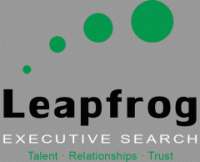Desperate Times
Category : 2021
In Spanish, it sounds like a line from an old western movie you can’t remember the title of, “Tiempos desesperados requieren medidas desesperadas.”
Italians probably say it while eating bruschetta, risotto, or something carbonara, “A mali estremi estremi rimedi.”
The French pair it with a glass of Merlot, “Aux grands maux les grands moyens.”
With due respect to our friends in the Netherlands, “Wanhopige tijden vragen om wanhopige maatregelen” has an appealing lilt, but it is a mouthful to pronounce.
In English, we know this line simply as, “Desperate times call for desperate measures.”
Forget about COVID, the latest natural disaster, or the political crisis du jour. For a moment, apply this iconic statement to your career and your brand. In the unpredictable, ever-evolving environment in which we now work, what measures have you taken to prepare for a strategic or unexpected move to a new role or different realm of responsibility?
For many corporate boards, the 2020 priority was keeping people in their C-suite chairs and hanging on for dear life while the repercussions of a pandemic repeatedly slammed into every industry and business across the globe like an ominous creature from a Steven Spielberg movie. Boards of Directors and senior leaders invested endless hours in monitoring the pandemic’s impact on corporate financial stability, employee well-being, and what it would take to keep customers engaging with an enterprise. The Harvard Law School Forum on Corporate Governance reported that at companies in the Russell 3000 (the largest 3,000 U.S. companies, representing about 98% of the investable U.S. equity market), CEO transitions dropped in the second quarter of 2020.1
The uncertainty emerging in C-suites across the globe seems characteristically close to the wistful musings of Mary Poppins’ friend, Bert.
Winds in the east, mist coming in,
Like something is brewin’ and bout to begin.
Can’t put me finger on what lies in store,
But I fear what’s to happen all happened before.
During 2021, Andy Jassy at Amazon, Tom Nolan at Kendra Scott, and Bob Jordan at Southwest Airlines benefitted from these winds of change as Jeff Bezos, Kendra Scott, and Gary Kelly announced they would vacate their CEO chairs for successors. In less-visible enterprises, boards and those responsible for a cohesive plan of succession are assessing whether the team currently enjoying the rarefied air of execudom can lead their organizations through the next iteration of what the business will look like—back to the office, hybrid, work-from-home, or text-from-outer space.
Boards can’t allow the relentless pandemic, political pandemonium, and supply chain gridlock to distract them from their responsibility to anticipate and plan for executive turnover and develop the leaders needed to assume broader roles of responsibility. Few companies can absorb the expense or fully mitigate the risk of replacing all the top talent with outsiders. It will likely take a blended strategy of recruiting a few new voices, while strengthening the capabilities of select leaders in the organization.
A competent executive presenting a definitive personal brand can harness these winds of uncertainty and change to create a new opportunity in the coming months. The first of three ideas is here—with two more to follow in our next blog.
Market your expertise, not your experience.
One of the greatest risks facing leaders as they progress in their careers is mistaking experience for expertise. Corporate histories are punctuated with accounts of executives who tried to replicate what they did in a past role in a new setting with unfortunate results.
Experience is personal contact with an event—an acquisition, a new product launch, a global expansion, or a business reinvention. Expertise is relevant knowledge and pertinent skills taken from an event that can be repurposed and applied in a new context. Length of time on a road does not equate to distance traveled and exposure to an event does not ensure anything valuable was learned through the experience. We don’t become effective decision makers because of our experiences. We become wise decision makers when we develop expertise in effective decision making while going through a spectrum of experiences.
Even if expertise is gained through an event, a wise leader is careful to not assume the same approach, strategy, or plan can be directly applied in a new context. After researching the good and bad decisions in scores of recognized companies, Dartmouth professor Sydney Finkelstein made two observations any executive wanting to capture the winds of opportunity will be careful to remember. Finkelstein noted,
“. . . more than half of flawed decisions result from leaders working from memories or experiences similar to the current situation but really aren’t,” and
“. . . We are at most risk of making bad decisions when we have enough experience to believe that we are right.”2
Distinct personal brands communicate capabilities and expertise as measurable value contributions, presented in a way that an executive team or Board of Directors can easily recognize as relevant and bringing needed expertise independent of an industry or business sector. Experience often requires industry context to have relevance. Expertise is relevant and transferable across multiple industries and markets.
A wise executive can use the experience/expertise dynamic to evaluate potential opportunities as well. If the questions asked by a recruiter or board are more about what you did than what you learned, more about what happened than what you took away from what happened, it may be an indication the company is looking for yesterday’s solution for today’s challenge.
1 https://corpgov.law.harvard.edu/2021/01/15/ceo-succession-practices-in-the-russell-3000-and-sp-500/
2 Finkelstein, Sydney. Think Again: Why Good Leader Make Bad Decisions. http://mba.tuck.dartmouth.edu/pages/faculty/syd.finkelstein/thinkagain/
